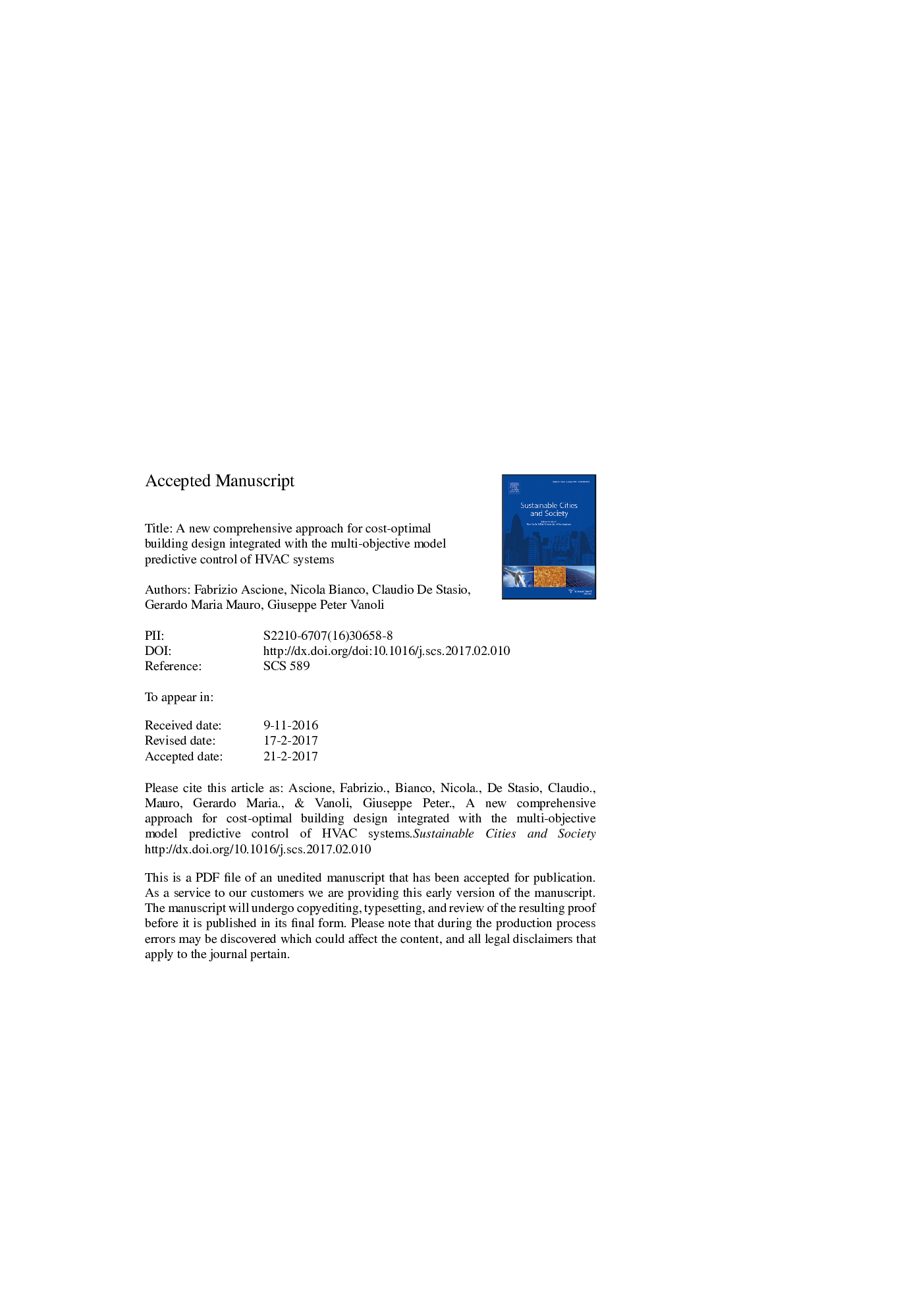| Article ID | Journal | Published Year | Pages | File Type |
|---|---|---|---|---|
| 4928058 | Sustainable Cities and Society | 2017 | 39 Pages |
Abstract
A new comprehensive approach is proposed to support cost-optimal design of building envelope's thermal characteristics and HVAC (heating, ventilating and air-conditioning) systems in presence of a simulation-based model predictive control (MPC) for heating and cooling operations. The cost-optimal solution is identified through a main mono-objective genetic algorithm (GA) that minimizes global costs for space conditioning. The explored solutions represent building thermal designs integrated with the MPC of HVAC systems. For defining the MPC strategies, the main GA launches two secondary bi-objective GAs that optimize heating and cooling operations, respectively. These secondary GAs perform Pareto optimizations by minimizing operating costs and thermal discomfort. They provide the optimal hourly set point temperatures for heating and cooling operations, with a day-ahead planning horizon, by considering the forecasts of weather conditions and building use. The optimal control strategies are found based on requirements of users, who set a minimum comfort level to be fulfilled. The GAs are implemented by coupling MATLAB® with EnergyPlus. The methodology is applied to a new multi-zone residential building in Naples (Southern Italy). It yields primary energy savings around 35.4 kW h/m2a and global cost savings around 7000 â¬, ensuring the same satisfying comfort level, compared to a standard design approach.
Keywords
Related Topics
Physical Sciences and Engineering
Energy
Renewable Energy, Sustainability and the Environment
Authors
Fabrizio Ascione, Nicola Bianco, Claudio De Stasio, Gerardo Maria Mauro, Giuseppe Peter Vanoli,
